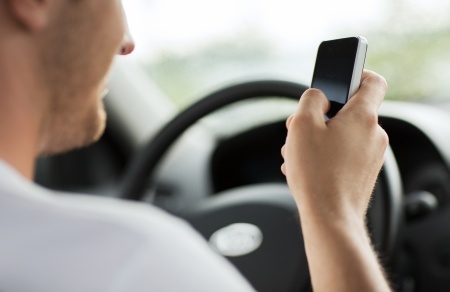
by Queener Law | Jan 25, 2015 | Auto Accident, DUI, Tennessee
The rate of drunk driving fatalities in the U.S. has increased and innocent people continue to be victimized by negligent drivers. Motor vehicle crashes involving drunk drivers killed 10,322 people in 2012 and injured 345,000 people, according to Mothers Against Drunk Driving. This high statistic accounted for 31 percent of all motor vehicle deaths that year, a 4.6 percent increase from 2011. In Tennessee, 295 lives were taken in drunk driving collisions that same year, which accounted for 29 percent of all traffic deaths. This was a 14 percent increase from 2011, a fact known by any established accident lawyer Gallatin. Federal and state officials are looking for new ways to combat this growing problem and save lives in the process.
Auto manufacturers and the National Highway Traffic Safety Administration are hoping to implement advanced driver alcohol-detection systems into cars, according to Edmunds.com. This new attempt at decreasing the national drunk driving fatality rate would make it difficult for drivers, with a blood alcohol content level over the legal limit of 0.08 percent, to drive on Tennessee roadways.
How would the DUI technology work?
The alcohol-detection technology would function similarly to ignition interlock devices with some slight differences. An accident lawyer in Gallatin is aware that ignition interlock devices are mandated for all convicted drunk drivers with a BAC of 0.08 percent or higher in Tennessee. These devices measure the amount of alcohol present in a driver’s breath sample. The IIDs will not let the vehicle start if the driver’s BAC is over a preset amount, usually 0.02 percent.
The new alcohol-detection technology, on the other hand, would disable the vehicle from starting if the driver has a BAC of 0.08 or higher. Rather than submitting a breath sample through a tube, like one would when using an ignition interlock device, the DUI technology would have an alternate way of measuring a driver’s BAC. Both devices are designed to curb drunk driving and decrease DUI auto accidents, injuries and fatalities.
A fatal decision
A 22-year-old man’s decision to drink and drive cost him his life. According to Local 8 Now News, the young Tennessee man and his 18-year-old passenger were traveling in the early morning hours when his car swerved into oncoming traffic. The intoxicated man and his passenger were not wearing seat belts and were thrown from the vehicle when they crashed into another car. The young driver was killed; however, his passenger and the driver of the other car involved in the accident received only injuries from the collision. Unfortunately, an accident lawyer in Gallatin may be all too familiar with these types of cases. However, injury victims may turn to an attorney for essential legal assistance.

by Queener Law | Jan 24, 2015 | Auto Accident, Tennessee
Car accidents injure millions of people across the United States each year. According to the National Highway Traffic Safety Administration, an estimated 2.36 million people were injured in traffic accidents in 2012, a 6.5 percent increase from 2011. From minor lacerations and broken bones to traumatic brain injury and paralysis, injuries experienced by car accident victims can vary from one incident to another. Many Tennessee personal injury attorneys know that the following are just a few of the most common types of motor vehicle accident injuries.
Broken bones and lacerations
Whether an accident victim experiences a severe compound fracture that requires surgical intervention or a simple broken arm that can be reset into place, broken bones can be extremely painful and may require additional therapy. Lacerations can occur when broken glass or airborne objects pierce the skin. In some instances, deep lacerations may need stitches and could leave scars.
Traumatic brain injuries
Traumatic brain injuries can occur when a person experiences a sudden jolt or impact to the head, causing brain tissue damage, according to the National Institute of Neurological Disorders and Stroke. The damage can range in severity from mild to extreme depending on the force of impact. Some victims of TBI will immediately notice key signs of brain damage, including dizziness, fatigue, headache, seizures, numbness in the extremities and loss of coordination. Other people may not have any symptoms for several weeks or even months after the incident takes place. Tennessee personal injury attorneys note that TBI can change some people’s lives forever and others may heal with time and therapy.
Neck and spinal cord injuries
Neck and spinal cord injuries can vary from mild whiplash to paralysis. According to the Mayo Clinic, paralysis occurs when trauma to the spinal cord, ligaments, vertebrae or disks damages or severs the nerve fibers passing through the spinal column. Damage done to the upper portion of the spinal cord may result in quadriplegia, or loss of movement and sensation of both upper and lower extremities. Lower spinal cord damage may lead to paraplegia, or loss of movement in the lower extremities. Motor vehicle accidents are responsible for causing more than 35 percent of all spinal cord injuries, making auto accidents the leading cause of such injuries.
Internal injuries
The impact from car accidents could cause internal bleeding and bruising to crucial organs, such as the kidneys, bowels, liver, spleen, lungs or heart. Fractured ribs could result in punctured lungs. If a person is impaled by an object, an organ may be affected as well. Internal injuries can be life threatening and require immediate attention.
Tennessee personal injury attorneys handle car accident cases where people have become seriously injured as a result of another driver’s negligence. Getting compensation can be the first step to getting one’s life back on track.

by Queener Law | Jan 23, 2015 | Auto Accident, Tennessee
In 2009, Tennessee became the ninth state in the nation to prohibit motorists from texting and driving, according to The Tennessean. Unfortunately, the ban has not decreased the number of people who are killed or injured each year in distracted driving car accidents involving cellphones, as many Clarksville auto accident attorneys have seen. Statistics from the National Safety Council show that in 2011, 10.6 percent of all traffic accidents in Tennessee involved drivers who were using their cellphones. While 71 people were killed in distracted driving accidents involving cellular devices in 2010, the number rose to 93 deaths in 2011.
Texting and driving causes auto accidents
A 17-year-old faces charges of texting while driving and failure to exercise due care after he slammed into a law enforcement officer’s vehicle head-on, according to WRCB News. Both the officer and the teen driver involved in the accident were sent to the hospital with minor injuries, and are extremely fortunate to escape the incident with their lives. Tennessee Highway Patrol found that the young boy had allegedly sent a text message two minutes before the accident took place. This may explain why the boy turned his steering wheel just in time to collide with the officer who was traveling in the opposite direction.
Clarksville auto accident attorneys are no strangers to handling texting crashes. WRCB News reported that even an auto body repair shop in McMinn County has seen an increase in business as a result of distracted driving car accidents. Victims of auto accidents caused by distracted drivers may be eligible for compensation for any property damage, medical expenses or lost wages that stem from the collision.
More than just a statewide issue
Distracted driving and texting crashes are not just a problem for Tennessee motorists. Distraction.gov states that in 2012, 3,328 people were killed in these types of accidents nationwide. Approximately 421,000 people were injured in distracted driving accidents that same year. The official U.S. government’s website dedicated to distracted driving also reported that 10 percent of all motorists under 20 years of age who were involved in deadly car accidents were distracted at the time of the collision. The Institute for Highway Safety has found that as many as 11 U.S. teenagers are killed each day as a result of texting and driving.
Studies show that texting while behind the wheel can be even more dangerous than driving while intoxicated. Negligent motorists who text while driving, may face charges of reckless driving, reckless endangerment, text messaging while operating a motor vehicle or criminally negligent homicide if they are apprehended by law enforcement. People who have been victimized by distracted drivers may want to seek legal assistance from Clarksville auto accident attorneys.

by Queener Law | Jan 21, 2015 | Auto Accident, Tennessee
The motor vehicle fatality rate in Tennessee fluctuates from year to year, according to the Tennessee Department of Transportation. As a way to combat this fluctuation and lower the fatality rate, state officials implemented a program that may have played a role in lowering Tennessee’s fatal crash rate. At the end of 2014, the state reported the lowest number of people killed in traffic accidents since 1963, according to WSMV News. TDOT and the Tennessee Highway Patrol believe that these numbers are no accident, and credit the new program with reducing deadly traffic accidents and saving lives.
According to WSMV, a Clarksville man was recently arrested and charged with driving under the influence, leaving the scene of an accident and vehicular assault. His alleged victim, a mother of five, still struggles with pain from her injuries. Sadly, this type of story is all too common to any Murfreesboro lawyer for car accident victims.
How the program works
The motor vehicle accident fatality rate in Tennessee increased by 8 percent, jumping from 937 deaths in 2011 to 1,014 deaths in 2012, according to the National Highway Traffic Safety Administration. In an attempt to lower the number of traffic accident deaths that occur on state roadways each year, Tennessee officials initiated a program that now predicts and prevents potential car accidents.
A Murfreesboro lawyer for car accident victims knows that the program works by breaking down the entire state into specific areas, which are carefully monitored for accident information. The program can predict where a serious accident will occur within four hours. Areas that have a high rate of car accident fatalities are saturated with patrolling law enforcement officers. The officers work to deter people from drinking and driving and catch negligent drivers before they cause collisions and serious injuries.
Multi-faceted approach to curbing negligent drivers
Not only has law enforcement flooded problematic areas around the state, but Tennessee Highway Patrol has increased the state’s DUI enforcement by 150 percent over the past three years. During that time, seat belt enforcement has also been increased by 240 percent. Along with heavy use of billboard advertising campaigns warning motorists that they will get caught if they choose to drive while impaired, this multi-faceted approach has worked to lower the number of traffic accident deaths to 902 in December of 2014. Although this number does not include car accident deaths from the last two weeks of the year, TDOT and the highway patrol feel very optimistic that the numbers will stay low.
When motorists climb behind the wheel of a vehicle, they may be in danger of becoming involved in a tragic accident caused by a distracted, drowsy or drunk driver. Motorists who have been injured in such an accident may want to consider contacting a Murfreesboro lawyer for car accident legal assistance

by Queener Law | Jan 18, 2015 | Auto Accident, DUI, Tennessee
When people choose to climb behind the wheel after drinking, they put the lives of everyone else on the road in danger. Many automobile accident attorneys Gallatin know that in a split second, a bad decision can lead to a catastrophic accident. That is what happened to a young Tennessee teen celebrating spring break with his friends in Panama Beach. According to the Panama City News Herald, the 18-year-old had a brief interaction with law enforcement when he backed up into another vehicle approximately 30 minutes before the fatal crash occurred. Although the teen admitted that he was slightly buzzed from drinking, he climbed behind the wheel again. He then continued to drive with a blood alcohol content level of 0.159 percent. That was when he allegedly fell asleep while driving and smashed into another car, killing the 22-year-old driver of the vehicle.
Rather than try the now 19-year-old as a youth and sentence him to receive treatment, the judge presiding over the case ordered the boy to spend 10 years in prison for DUI manslaughter. The teen is mandated to create a talk on how the fatal crash has influenced his life, and present it to the Bay County Chamber of Commerce. He must also talk to high school students about the dangers of drinking and driving at least twice a year.
Teen driver alcohol consumption
Teenager motorists and alcohol are a deadly combination. The National Highway Traffic Safety Administration reported that while traffic accidents were the leading cause of teen fatalities in 2011, nearly one-quarter of those accidents involved alcohol. Inexperience and the inability to make wise choices in certain situations, makes teenage drivers three times more likely than experienced drivers to be involved in a serious car accident, according to the Centers for Disease Control and Prevention. Alcohol can make the situation even worse.
DUIs change lives
Mothers Against Drunk Driving reported that 10,076 people were killed in drunk driving auto accidents in 2013, and another 290,000 people were seriously injured. In Tennessee alone, 295 people were fatally injured in DUI accidents in 2012, which was a 14 percent increase from the previous year. Unfortunately, drunk driving cases are familiar territory for automobile accident attorneys in Gallatin.
Injured victims of drunk driving collisions may find it helpful to partner with automobile accident attorneys in Gallatin. Some people may be eligible to receive compensation for their medical expenses, property damage and lost wages from work.

by Queener Law | Jan 16, 2015 | Auto Accident, Tennessee
Although talking or texting on a cellular device may be one of the most common forms of distracted driving, there are many other activities that drivers engage in that can be considered distracting and dangerous as well. An auto collision accident involving distracted driving is a case that a Nashville car accident lawyer would be familiar with. All forms of distracted driving can be arranged into three main categories, according to Distraction.gov. These include:
- Visual distractions
Any activity that requires a driver to remove his or her eyes from the road is considered a visual distraction. This includes looking away from the road to adjust the radio, change a CD, dial a phone number, read a text or even search for an item in the glove compartment. A study performed by the Virginia Tech Transportation Institute found that people who text and drive remove their eyes from the road for an average of five seconds. That is long enough for a car going 55 mph to travel the length of a football field.
- Manual distractions
Manually distractive tasks occur when a driver removes his or her hands off of the steering wheel. Whether drivers are reaching for their cellphones or eating, they do not have full control over their car because they are using their hands to do something else. Some other manual distractions include picking up items off of the floor, handing items to passengers in the backseat, drinking and updating social media profiles while driving.
- Cognitive distractions
A Nashville car accident lawyer knows that one of the most overlooked, yet deadly forms of driver interference are cognitive distractions. These distractions occur when motorists take their mental focus off of driving and attempt to multitask. According to studies evaluated by the National Safety Council, the human brain is incapable of multitasking, or effectively completing two complex tasks at once. Instead, the mind quickly switches back and forth from one task to the other. This leaves moments where the motorist isn’t concentrating on driving at all. It creates a sort of mental blindness where drivers are unable to process up to 50 percent of the information in their driving environment.
Many distracted driving tasks can be categorized into more than one form of distraction. Texting and talking on a cellphone is considered especially dangerous because it involves all three types of distractions. The Virginia Tech Transportation Institute found that when drivers perform manual-visual tasks, they are three times more likely to be involved in an auto collision.
People who have been involved in a distracted driving collision often turn to an established Nashville car accident lawyer for legal assistance and to receive compensation for their injuries, lost wages and property damage.






